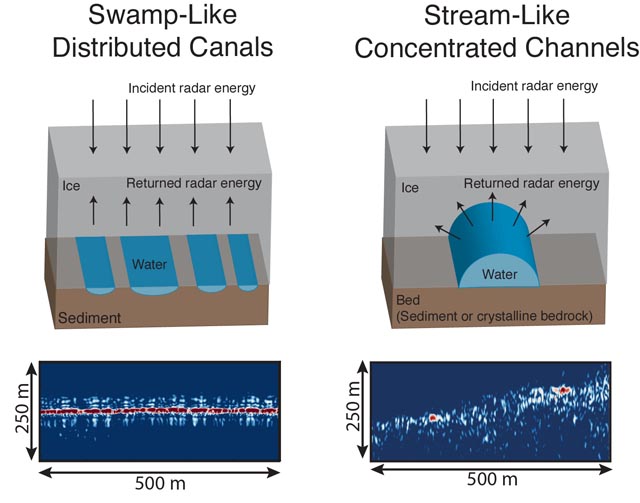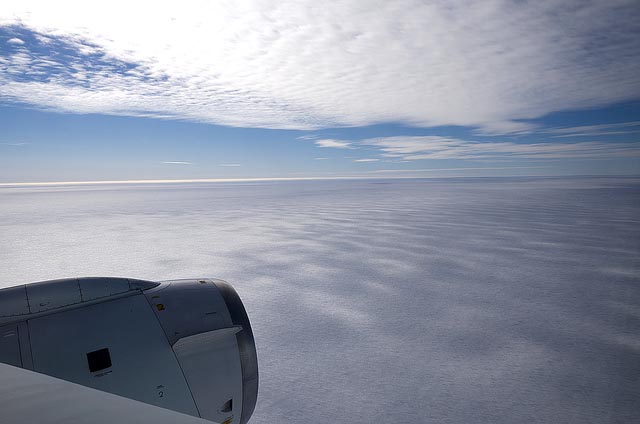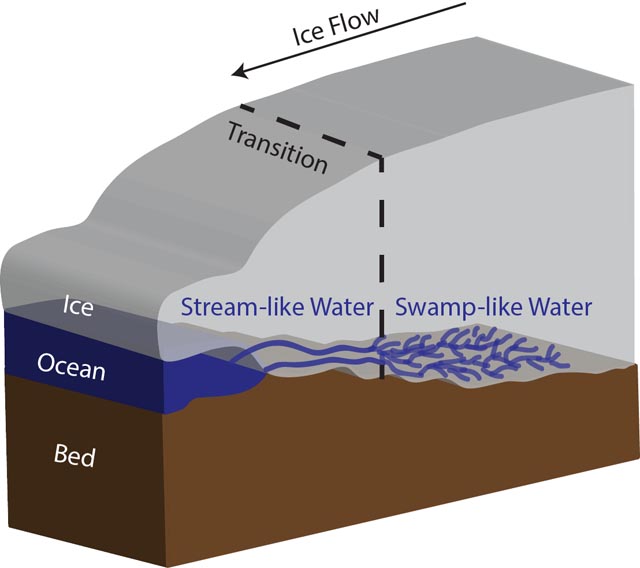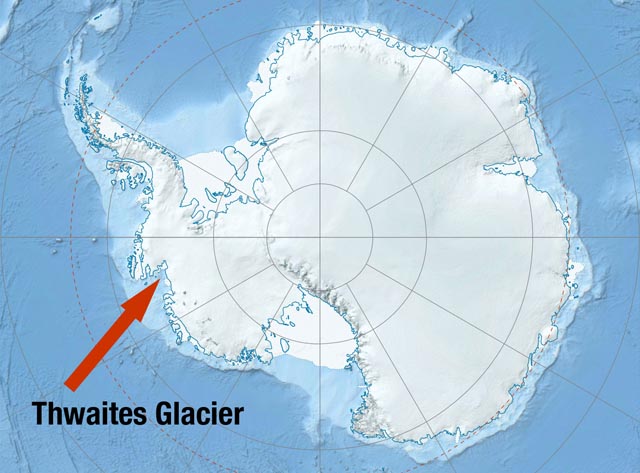|
SwampedNew analysis identifies water system beneath fast-flowing Thwaites GlacierPosted July 19, 2013
Scientists have found a swamp-like canal system larger than the Florida Everglades underneath a major glacier in West Antarctica using innovations in radar analysis. The find may help climate researchers refine predictions about future sea-level rise from the ice sheet. The discovery was described this month in the journal Proceedings of the National Academy of Sciences by scientists at The University of Texas at Austin’s Institute for Geophysics (UTIG) The radar data were collected during the 2004-05 field season in Antarctica using airplanes with radar antennas strapped under the wings, as part of the Airborne Geophysical Survey of the Amundsen Embayment (AGASEA) Researchers created detailed topographic maps of the subglacial topography and ice thickness across a large swatch of West Antarctica. But the use of ice-penetrating radar to characterize the subglacial water below the ice, which plays a key role in how the ice moves, has come up against technical challenges related to the effects of ice temperature on radar. Until now. “It has taken about nine years since data acquisition to develop and implement the new methods and synthesize the results,” said Donald Blankenship The latest research describes a subglacial water system underneath Thwaites Glacier, one of the major outlet glaciers for the West Antarctic Ice Sheet. Thwaites contains enough fresh water to raise oceans by about a meter. Dusty Schroeder Schroeder’s technique to overcome the previous technical challenges looked at the geometry of reflections, because the temperature of the ice does not affect the angular distribution of radar energy. “Looking from side angles, we found that distributed patches of water had a radar signature that was reliably distinct from stream-like channels,” Schroeder said in a UTIG press release 
Photo Credit: UTIG
Cartoon representations (above) and radar images (below) of the distinct swamp-like and stream-like water systems observed beneath Thwaites Glacier.
Distinguishing subglacial swamps from streams is important because of their contrasting effect on the movement of glacial ice. Swamp-like formations tend to lubricate the ice above them. On the other hand, streams conduct water more efficiently and are likely to cause the base of the ice to stick between the streams. The effect is similar to the way rain grooves on a tire can help prevent a car from hydroplaning on a wet road. As a result of this change in slipperiness, the glacier’s massive conveyor belt of ice piles up at the zone where the subglacial water system transitions from swamps to streams. This transition forms a stability point along a subglacial ridge that holds the massive glacier on the Antarctic continent. “This is where ocean and ice sheet are at war, on that sticking point, and eventually one of them is going to win,” Blankenship said in the UTIG press release. “Like many systems, the ice can be stabilized until some external factor causes it to jump its stability point. “We now understand both how the water system is organized and where that dynamic is playing itself out,” he added. “Our challenge is to begin to understand the timing and processes that will be involved when that stability is breached. Current models predicting the fate of the glacier do not yet account for these dynamic, subglacial processes.” NSF-funded research in this project: Jack Holt, Donald Blankenship and David Morse, The University of Texas at Austin, Award No. 0230197 |



For USAP Participants |
For The Public |
For Researchers and EducatorsContact UsU.S. National Science FoundationOffice of Polar Programs Geosciences Directorate 2415 Eisenhower Avenue, Suite W7100 Alexandria, VA 22314 Sign up for the NSF Office of Polar Programs newsletter and events. Feedback Form |




